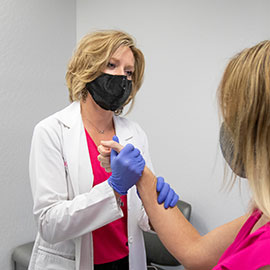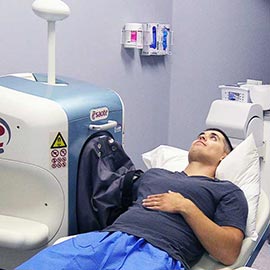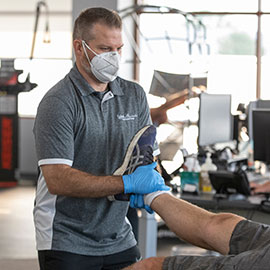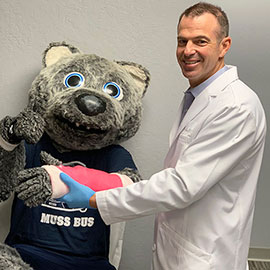Information about Cast and Splint Care
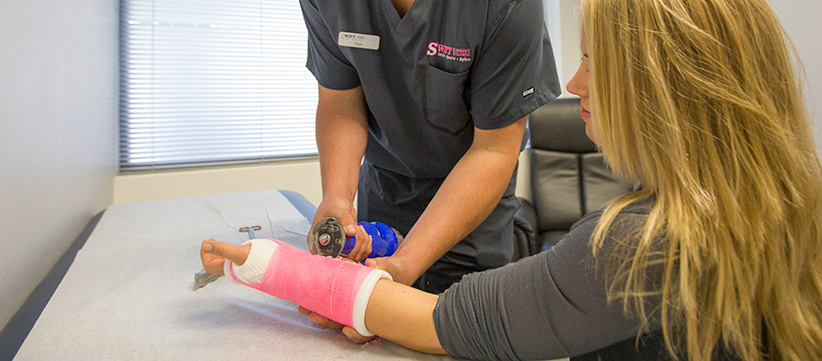
At Swift Urgent Clinic, casting and splinting techniques are used to immobilize injuries to your bones and/or soft tissue, to allow them to heal. Casts and splints can provide comfort to patients as the immobilization will often reduce pain, swelling and muscle spasm.
Why is a splint used before a cast?
Splints are commonly used initially for treatment regarding a “fresh” injury. This is because a splint is essentially a “half cast” and will be able to expand and retract with the level of swelling present from the injury. As swelling subsides your splint will be replaced by a cast.
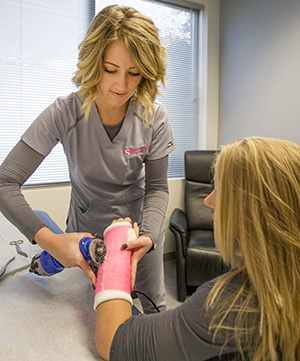
About your cast
Over the first 48-72 hours your cast may feel tight due to swelling from your injury. Because of this it is extremely important to do everything you can to reduce swelling.
To reduce swelling the following techniques should be used:
• Elevation: get your injury above the level of your heart to allow any fluid and/or blood to drain back to the heart and away from the injury site.
• Exercise: gently flex and extend fingers and/or toes to prevent them from becoming stiff in the cast/splint.
• Ice: you can apply ice just above the level of your cast/splint (not directly to skin) to cool blood and fluid as it enters the cast.
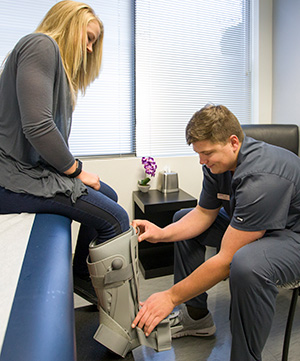
Caring for your cast
• Keep your cast/splint dry: Casts/splints are NOT waterproof! Moisture threatens the integrity of your cast or splint and can also greatly increase your chances of getting a skin infection while your injury heals. Plastic bags and/or cast cover bag should be used to keep your cast/splint dry. If your cast/splint becomes saturated and you are unable to dry it out, return to the clinic to have it inspected.
• Do NOT put anything into or down your cast/splint: Avoid dirt and sand as they will cause skin irritation if they get inside the cast. Never place any powders, lotions, or deodorants into your cast, as it will turn to a paste inside the cast and cause skin irritation which may lead to infection.
• Do NOT trim, modify, or remove your cast/splint: Do not trim/break off edges/pieces of your cast/splint. Do not pull padding out of the cast/splint. Under no circumstance should you remove your own cast/splint, as you can worsen your current injury or cause new injuries. We have trained professionals to remove the cast for you. If our office is not open, refer to the closest ER.
• Itching: Do not stick hangers or any other objects into your cast/splint to itch. If you damage/break the skin itching or scratching, you will greatly increase your likelihood of getting a skin infection. Instead try a blow dryer on a cool setting or a vacuum to pull air through the cast.
• Inspect your cast/splint regularly: if your cast becomes cracked or loose, or if your skin around the cast becomes raw or red return to the clinic to have the cast inspected.
The following signs or symptoms may indicate additional advice is necessary:
• Increased pain and/or tightness: This is usually due to increase in swelling. If these symptoms do not subside with elevation over 24 hours, call for additional advice or return to clinic for inspection.
• Numbness, tingling, and burning sensation: These symptoms can be caused by an increase in pressure on your nerves or skin, usually due to swelling. If the symptoms persist after elevation for 24 hours, call for additional advice or return to clinic for inspection.
As always, if you have any further questions, give the Sparks clinic a call at 775-507-4700.
